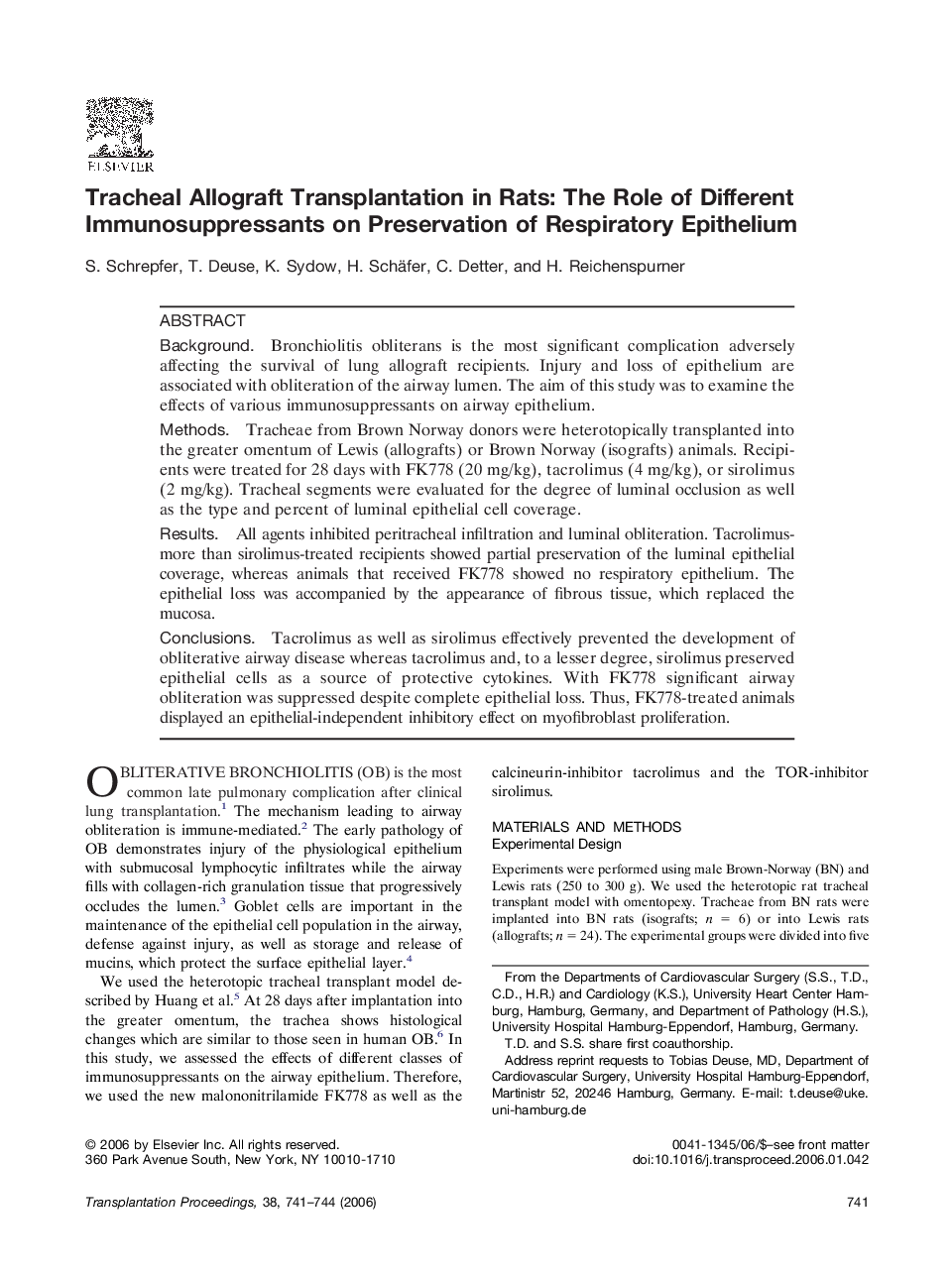| Article ID | Journal | Published Year | Pages | File Type |
|---|---|---|---|---|
| 4263001 | Transplantation Proceedings | 2006 | 4 Pages |
BackgroundBronchiolitis obliterans is the most significant complication adversely affecting the survival of lung allograft recipients. Injury and loss of epithelium are associated with obliteration of the airway lumen. The aim of this study was to examine the effects of various immunosuppressants on airway epithelium.MethodsTracheae from Brown Norway donors were heterotopically transplanted into the greater omentum of Lewis (allografts) or Brown Norway (isografts) animals. Recipients were treated for 28 days with FK778 (20 mg/kg), tacrolimus (4 mg/kg), or sirolimus (2 mg/kg). Tracheal segments were evaluated for the degree of luminal occlusion as well as the type and percent of luminal epithelial cell coverage.ResultsAll agents inhibited peritracheal infiltration and luminal obliteration. Tacrolimus- more than sirolimus-treated recipients showed partial preservation of the luminal epithelial coverage, whereas animals that received FK778 showed no respiratory epithelium. The epithelial loss was accompanied by the appearance of fibrous tissue, which replaced the mucosa.ConclusionsTacrolimus as well as sirolimus effectively prevented the development of obliterative airway disease whereas tacrolimus and, to a lesser degree, sirolimus preserved epithelial cells as a source of protective cytokines. With FK778 significant airway obliteration was suppressed despite complete epithelial loss. Thus, FK778-treated animals displayed an epithelial-independent inhibitory effect on myofibroblast proliferation.
